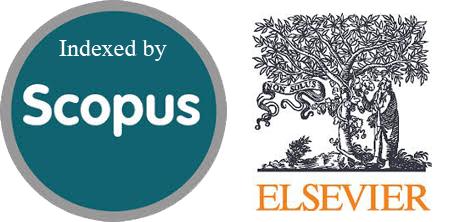The Role of Negative Automatic Thoughts and Gender in Predicting Self-Harm among Youth
DOI:
https://doi.org/10.54133/ajms.v9i1.2018Keywords:
Baseline assessment, Deliberate self-harm, Personality traits, Problem solvingAbstract
Background: Deliberate self-harm (DSH) is a maladaptive behavior mostly found in youth. This study examines problem-solving skills (PSS), coping strategies, and cognitive distortion in youth who engage in DSH. Objectives: The study investigated the association of coping strategies, problem-solving skills, and personality with self-harm behaviors and the severity of anxiety and depression. Methods: This cross-sectional observational study was conducted in a tertiary care hospital in Eastern India. Seventy-five participants of both genders, aged 15-29 years, were selected. Socio-demographic details, PSI, coping strategies, dichotomous thinking (DTI), and personality traits were assessed using appropriate psychological tools. Anxiety and depression were measured with the Hamilton Anxiety Rating (HAM-A) and Hamilton Depression Rating (HAM-D) scales. Results: The mean age of the 75 participants was 22.7 years. Gender analysis showed minimal differences in problem-solving and coping strategies. Positive correlations emerged between problem-solving and coping skills (r=0.347, p=0.002) and problem-solving and independence (r=0.238, p=0.040). Anxiety was associated with self-control (r=0.283, p=0.014) and tough-mindedness (r=-0.565, p<0.001). Conclusions: The study showed how thinking patterns, emotions, and personality traits affect self-harm in young people, highlighting the need for tailored therapies like cognitive behavior therapy and DBT.
Downloads
References
Shahwan S, Abdin E, Zhang Y, Sambasivam R, Fauziana R, Mahesh M, et al. Deliberate self-harm in psychiatric outpatients aged 14-35 years in Singapore. Ann Acad Med Singap. 2018;47(9):360-372. DOI: https://doi.org/10.47102/annals-acadmedsg.V47N9p360
Kpeno A, Sahoo S, Sahu AK, Kumar P. Cognitive constructs and personality profiles in youth with deliberate self-harm behaviours : A scoping review. Int Res J Multidiscip Scope. 2024;5:232–245. doi: 10.47857/irjms.2024.v05i02.0421. DOI: https://doi.org/10.47857/irjms.2024.v05i02.0421
Barreto Carvalho C, da Motta C, Sousa M, Cabral J. Biting myself so I don't bite the dust: prevalence and predictors of deliberate self-harm and suicide ideation in Azorean youths. Braz J Psychiatry. 2017;39(3):252-262. doi: 10.1590/1516-4446-2016-1923. DOI: https://doi.org/10.1590/1516-4446-2016-1923
Kharsati N, Bhola P. Self-injurious behavior, emotion regulation, and attachment styles among college students in India. Ind Psychiatry J. 2016;25(1):23-28. doi: 10.4103/0972-6748.196049. DOI: https://doi.org/10.4103/0972-6748.196049
Zhang A, Park S, Sullivan JE, Jing S. The effectiveness of problem-solving therapy for primary care patients' depressive and/or anxiety disorders: A systematic review and meta-analysis. J Am Board Fam Med. 2018;31(1):139-150. doi: 10.3122/jabfm.2018.01.170270. DOI: https://doi.org/10.3122/jabfm.2018.01.170270
Kharsati N, Bhola P. Patterns of non-suicidal self-injurious behaviours among college students in India. Int J Soc Psychiatry. 2015;61:39–49. doi: 10.1177/0020764014535755. DOI: https://doi.org/10.1177/0020764014535755
D’Zurilla TJ, Nezu AM, Maydeu-Olivares A. Social Problem Solving: Theory and Assessment. In: Chang EC, D’Zurilla TJ, Sanna LJ, (Eds.), Social Problem Solving: Theory, Research, and Training. Washington DC: American Psychological Association, 2004, pp. 202-274. doi: 10.1037/10805-001. DOI: https://doi.org/10.1037/10805-001
Richardson CE, Magson NR, Fardouly J, Oar EL, Forbes MK, Johnco CJ, et al. Longitudinal associations between coping strategies and psychopathology in pre-adolescence. J Youth Adolesc. 2021;50(6):1189-1204. doi: 10.1007/s10964-020-01330-x. DOI: https://doi.org/10.1007/s10964-020-01330-x
Williams AL, Craske MG, Mineka S, Zinbarg RE. Neuroticism and the longitudinal trajectories of anxiety and depressive symptoms in older adolescents. J Abnorm Psychol. 2021;130(2):126-140. doi: 10.1037/abn0000638. DOI: https://doi.org/10.1037/abn0000638
Krishnan RG, Sethuramalingam V. Who are youth ? The search for a comprehensive definition. Res Direction. 2017;5:6.
Groen RN, Ryan O, Wigman JTW, Riese H, Penninx BWJH, Giltay EJ, et al. Comorbidity between depression and anxiety: assessing the role of bridge mental states in dynamic psychological networks. BMC Med. 2020;18(1):308. doi: 10.1186/s12916-020-01738-z. DOI: https://doi.org/10.1186/s12916-020-01738-z
Brennan N, Beames J, Kos A, Reily N, Connell C, Hall S, et al. Psychological distress in young people in Australia: Fifth biennial youth mental health report 2012-2020. 2021. Available at: https://www.blackdoginstitute.org.au/wp-content/uploads/2021/09/Youth-Mental-Health-Report-2012-2020.pdf
Song S, Yang X, Yang H, Zhou P, Ma H, Teng C, et al. Psychological resilience as a protective factor for depression and anxiety among the public during the outbreak of COVID-19. Front Psychol. 2021;11:618509. doi: 10.3389/fpsyg.2020.618509. DOI: https://doi.org/10.3389/fpsyg.2020.618509
Stringer KL, Turan B, McCormick L, Durojaiye M, Nyblade L, Kempf MC, et al. HIV-related stigma among healthcare providers in the Deep South. AIDS Behav. 2016;20(1):115-125. doi: 10.1007/s10461-015-1256-y. DOI: https://doi.org/10.1007/s10461-015-1256-y
Duarte TA, Paulino S, Almeida C, Gomes HS, Santos N, Gouveia-Pereira M. Self-harm as a predisposition for suicide attempts: A study of adolescents’ deliberate self-harm, suicidal ideation, and suicide attempts. Psychiatry Res. 2020;287. doi: 10.1016/j.psychres.2019.112553.. DOI: https://doi.org/10.1016/j.psychres.2019.112553
Tang J, Zhang T. Causes of the male-female ratio of depression based on the psychosocial factors. Front Psychol. 2022;13:1052702. doi: 10.3389/fpsyg.2022.1052702. DOI: https://doi.org/10.3389/fpsyg.2022.1052702
Melton TH, Croarkin PE, Strawn JR, McClintock SM. Comorbid anxiety and depressive symptoms in children and adolescents: A systematic review and analysis. J Psychiatr Pract. 2016;22(2):84-98. doi: 10.1097/PRA.0000000000000132. DOI: https://doi.org/10.1097/PRA.0000000000000132
Rodrigues R, Mehesz EZ, Lingford-Hughes A, Di Simplicio M. Approach-avoidance biases to self-harm cues in young people with self-harm. J Affect Disord. 2023;340:435-441. doi: 10.1016/j.jad.2023.08.021. DOI: https://doi.org/10.1016/j.jad.2023.08.021
Liu BP, Jia CX, Qin P, Zhang YY, Yu YK, Luo X, et al. Associating factors of suicide and repetition following self-harm: A systematic review and meta-analysis of longitudinal studies. EClinicalMedicine. 2022;49:101461. doi: 10.1016/j.eclinm.2022.101461. DOI: https://doi.org/10.1016/j.eclinm.2022.101461
Brown AC, Dhingra K, Brown TD, Danquah AN, Taylor PJ. A systematic review of the relationship between momentary emotional states and nonsuicidal self-injurious thoughts and behaviours. Psychol Psychother. 2022;95(3):754-780. doi: 10.1111/papt.12397. DOI: https://doi.org/10.1111/papt.12397
Johnson SL, Robison M, Anvar S, Swerdlow BA, Timpano KR. Emotion-related impulsivity and rumination: Unique and conjoint effects on suicidal ideation, suicide attempts, and nonsuicidal self-injury across two samples. Suicide Life Threat Behav. 2022;52(4):642-654. doi: 10.1111/sltb.12849. DOI: https://doi.org/10.1111/sltb.12849
Sadath A, Troya MI, Nicholson S, Cully G, Leahy D, Ramos Costa AP, et al. Physical and mental illness comorbidity among individuals with frequent self-harm episodes: A mixed-methods study. Front Psychiatry. 2023;14:1121313. doi: 10.3389/fpsyt.2023.1121313. DOI: https://doi.org/10.3389/fpsyt.2023.1121313
Mariyati M, Arifianto A. Exploration of risk factors for suicidal ideation in depressed adolescents. Int Sci Health J. 2024;2(3):11-19. doi: 10.59680/ishel.v2i3.1286. DOI: https://doi.org/10.59680/ishel.v2i3.1286
Chen S. Predictive roles of thinking styles in coping strategies among mainland postgraduate students in Hong Kong. Front Psychol. 2022;12:693637. doi: 10.3389/fpsyg.2021.693637. DOI: https://doi.org/10.3389/fpsyg.2021.693637
Buser JK, McLaughlin RP. Narrative analysis of body dissatisfaction and spirituality. J Ment Heal Couns. 2019;41:36–50. doi: 10.17744/mehc.41.1.04. DOI: https://doi.org/10.17744/mehc.41.1.04
Van Orden KA, Witte TK, Cukrowicz KC, Braithwaite SR, Selby EA, Joiner TE. The interpersonal theory of suicide. Psychol Rev. 2010;117(2):575-600. doi: 10.1037/a0018697. DOI: https://doi.org/10.1037/a0018697
Compas BE, Jaser SS, Dunbar JP, Watson KH, Bettis AH, Gruhn MA, et al. Coping and emotion regulation from childhood to early adulthood: Points of convergence and divergence. Aust J Psychol. 2014;66(2):71-81. doi: 10.1111/ajpy.12043. DOI: https://doi.org/10.1111/ajpy.12043
Kotov R, Gamez W, Schmidt F, Watson D. Linking "big" personality traits to anxiety, depressive, and substance use disorders: a meta-analysis. Psychol Bull. 2010;136(5):768-821. doi: 10.1037/a0020327. DOI: https://doi.org/10.1037/a0020327

Downloads
Published
How to Cite
Issue
Section
License
Copyright (c) 2025 Al-Rafidain Journal of Medical Sciences ( ISSN 2789-3219 )

This work is licensed under a Creative Commons Attribution-NonCommercial-ShareAlike 4.0 International License.
Published by Al-Rafidain University College. This is an open access journal issued under the CC BY-NC-SA 4.0 license (https://creativecommons.org/licenses/by-nc-sa/4.0/).











